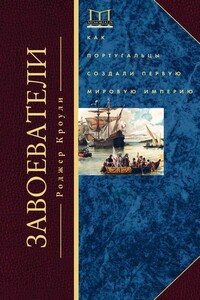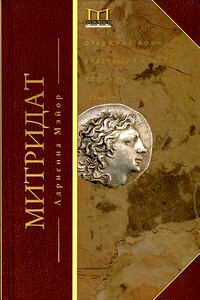unpublished translation by Charlotte Rouché (перевод, любезно предоставленный автору).
Robert Browning, “Teachers” in Gugielmo Cavallo, ed., The Byzantines (Cicago, 1997)
Averil Cameron and Judith Herrin, eds., Constantinople in the Early Eighth Century: The Parastaseis Syntomoi Chronikai (Leiden, 1984).
Liliana Simeonova, Diplomacy of the Letter and the Cross: Photios, Bulgaria and the Papacy, 860s – 880s (Amsterdam, 1998).
Информацию об основателе алгебры читайте на www – history.mcs.st – andrews.ac.uk/Biographies/Al – Khwarizmi.html
Catherine Holmes and Judith Waring, eds., Literacy, Education and Manuscript Transmission in Byzantium and Beyond (Leiden, 2002).
Глава 12
Святые Кирилл и Мефодий, «апостолы славян»
Эпиграф к главе: The Vita of Constantine and the Vita of Methodius, tr. Marvin Kantor and Richard Stephen White (Ann Arbor, Mich., 1976). P. 49.
V. Vavfinek, “The Introduction of the Slavonic Liturgy and the Byzantine Missionary Policy” in Beiträge zur byzantinischen Geschichte im 9–11. Jh. (Prague, 1978). P. 255–284.
V. Vavfinek and B. Zástĕrová, “Byzantium’s Role in the Formation of Great Moravian Culture”, Byzantinoslavica 43 (1982). P. 161–188.
Часть III
Византия становится средневековым государством
Глава 13
«Греческий огонь»
Эпиграф к главе: Liutprand of Cremona, The Enbassy to Constantinople and other Writings, tr. F. A. Wright (London, 1930); repr. (London, 1993). P. 136.
J. F. Haldon et al., “Greek Fire revisited” in Elizabeth M. Jeffreys, ed., Byzantine Style, Religion and Civilization in Honour of Sir Steven Runciman (Cambridge, 2006). P. 290–325.
John Haldon, Warfare, State and Society in the Byzantine World 565–1204 (London, 1999).
Глава 14
Византийская экономика
Эпиграф к главе: The Chronicle of Theophanes Confessor, ed. and tr. Cyril Mango and Roger Scott (Oxford, 1997), Anno Mundi 6287. P. 645.
Angeliki Laiou, “Exchange and trade, seventh-twelfth centuries” in Angeliki Laiou et al., eds., The Economic History of Byzantium (Washington DC, 2002).
Cécile Morrison, “Byzantine money: its production and circulation” in Laiou et al., eds., The Economic History of Byzantium (Washington DC, 2002).
Jacques Lefort, “The rural economy seventh – twelfth centuries” in Laiou et al., eds., The Economic History of Byzantium (Washington DC, 2002).
Warren Treadgold, The Byzantine State Finances in the Eighth and nineth Centuries (New York, 1982).
Nicolas Oikonomides, “Title and Income at the Byzantine Court”, in Henry Maguire, ed., Byzantine Court Culture from 829 to 1204 (Dumberton Oaks, Washington DC, 1997). P. 199–215.
Leonora Neville, “Taxing Sophronia’s son – in – law…” in Lynda Garland, ed., Byzantine Women, Variety of Experience 800–1200 (Aldershot, 2006). P. 78–79.
Эпиграф к главе: The Life of St Andrew the Fool, Lennart Rydén, ed., 2 vols. (Uppsala, 1995). Vol. 2. P. 81–81.
Katherine M. Ringrose, The Perfect Servant: Eunuchs and the Social Construction of Gender in Byzantium (Chicago and London, 2003).
Timothy S. Miller, The Orphans of Byzantium: Child Welfare in the Christian Empire (Washington DC, 2003).
Shaun Tougher, ed. Eunuchs in Antiquity and Beyond (London, 2003).
Глава 16
Императорский двор
Эпиграф к главе: al-Marwazi, Properties of Animals, tr. V. Minorsky, “Marwazi on the Vizantines” in his Medieval Iran and its Neighbours (London, 1982). P. 455–469.
A. A. Vasiliev, “Harun ibn Yahya and his description of Constantinople”, Seminarium Kondakovianum 5 (1932). P. 149–163.
Nadia Maria El Cheikh, Byzantium Viewd by the Arabs (Cambridge, Mass., 2004). P. 204.
John Haldon, “Chapters II, 44 and 45 of De Cerimoniis. Theory and Practicein tenth – century military administration”, Travaux et Mémoires 13 (1999).
James Trilling, “Daedalus and the Nightingale: Art and Techno; ogyin the Myth of the Byzantine Court”, in Henry Maguire, ed., Byzantine Court Culture from 829 to 1204 (Dumbarton Oaks, Washington DC, 1997). P. 217–230. Автор блестяще продемонстрировал понимание тонкостей «греческого огня» и придворных технологий, двух взаимосвязанных аспектов, влияющих на способность византийцев производить впечатление.






